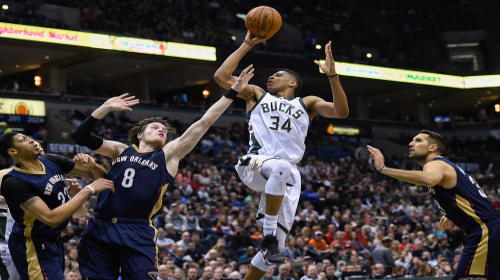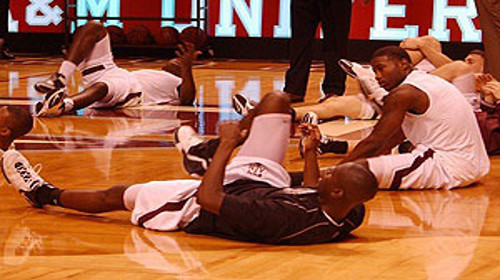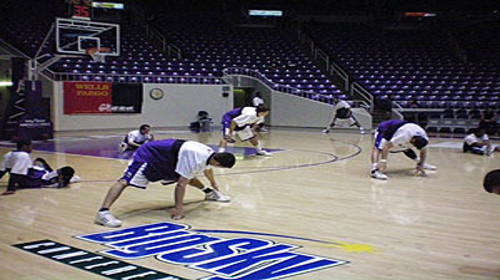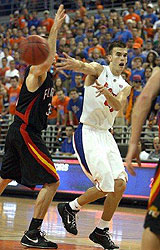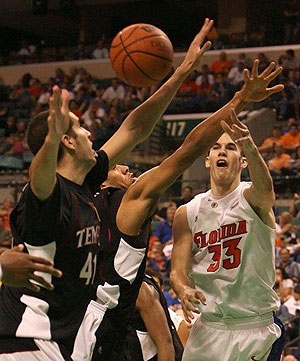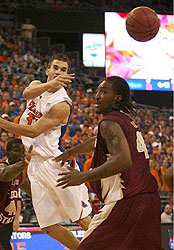-
Phone
+30 6945642463 -
email
info@basketballtraining.gr -
Programs
Choose-

PROGRAMS

PROGRAMS OVERVIEW

PERSONAL TRAINING

POST PLAY

DEFENCE

OFFENSIVE SKILLS

SHOOT

Basketball Training is BBT
BasketBall Training (BBT) is the premier destination in the world for teams, professionals, and student-athletes looking to improve their athleticism, strength, and basketball skills.Read More

PASSING
Passing is an easy skill to master from a technical standpoint. Chest, bounce, overhead, behind the back, etc are easy to develop. You could use a partner or a wall and find "targets". Attempt to hit the spot over and over again with speed, zipping the pass towards the target.
The bigger issue with passing is practical application. Knowing what passes to use in particular situations and developing timing. Too often we see a bounce pass when a chest pass was needed. We see chest passes thrown in transition when a bounce passes would be better. How many times have we seen passes thrown to where a player is as opposed to where they are going (leading). This can only be worked on in 3 ways: Watching, experimenting, then learning from the experiences. Watch college and NBA games and pay attention to the passes that get through and those that are stolen or deflected. Pay close attention to the situations in which different passes are used. Also pay attention to the recipients of the passes to see how they catch, where they catch, and the target that they show. This, too will make you a better passer.
Passing is a lost art because it is not as glorified a skill as dunking, dribbling or shooting 3's. However, it is a separator at the next level. Meaning if you can "drop dimes" you will receive a lot of playing time. Passing off the left and right hand, off the dribble, and after a dribble moves are skills that players should practice daily on a wall, with a toss back or partner. As many shots as a player makes, this is how many passes players should take. This will make passing in the game easier. Game passing must be practiced vs. defense. Players should remember that they are always reading 3 defenders when they have the ball: 1) their defender 2) their receivers' defender 3) help weak-side defense. Their footwork must be great to sweep pivot and reverse pivot through defender. They should always be able to see the pressure window on a defender (shoulder to shoulder, shoulder to rib).
Passing is one of the most important skills in the game today. A sign of a great player is his or her ability to make everyone around them better. Passing is one of the major skills that make this possible. Many coaches talk about a player's ability to drive left and right or to finish inside with both hands, but do not place enough emphasis on passing effectively with both hands. The ability to pass the ball with the hand nearest the intended receiver allows the passer to use a better angle and release the ball quicker. Releasing the ball quickly and establishing a good passing angle are two skills that all great passers must have.
Players often make the game more difficult by not making reads, dribbling into a danger zone, creating a poor passing angle, or simply trying to do more than what is needed with the pass (i.e. Unnecessary behind back passes). Remember to make the easy play. The best pass is the pass that finishes with a basket or leads to a basket. Great passers understand that they must be able to deliver the ball to the right person in the right place at the right time.
Great passers are also great ball handlers and see the floor at all times never missing an opportunity to create a play for a teammate. It is important that we understand concepts about passing in transition passing vs. pressure driving the lane for a kick or a dish feeding the post initiating the offense. Remember in practice to work on releasing the ball quickly and accurately and that every pass is a transaction between two players and every missed pass is just as much the passer's fault as the receiver's fault. Passing workouts should be progressive and focus on drills that simulate game situations that involve communication between passer and receiver while teaching players to create angles that make the game easy.
Passing is as fun as any skill set because it involves more than 1 person. Any opportunity you get to involve a friend in an activity it usually makes that activity more fun. Players who are prolific passers are usually the same players who know how to handle and get into seams. Players who can do this usually force help which opens up passing lanes for your teammates. Passing is a great pressure release. When you play against great defensive teams or a great individual player the best way to get them off of you is to make a pass and cut.
A couple of keys to passing includes:
Don't telegraph your passes. Look to score and just that threat alone will have the help defense come over and you will instinctively make the read.
Fake a pass to make a pass. If you want to go chest pass off of triple threat you will fake low and get the defenders hands down and you quickly pass high or vice versa.
Use different types of passes through out the game. Using the same move over and over will be easy to stop after a while. Same goes for passes. If you only use one type of pass the defender will be able to get their hands in a position to get a deflection or a steal.
Try to hit players in rhythm. This means if a player is coming off of a screen the ball should already be in the air as they are going shoulder to shoulder off of the screen. There is nothing worse than a player fighting to get open and the ball arrives 2 seconds too late. This hurts the chances of scoring and also neglects the assist for you.
-



